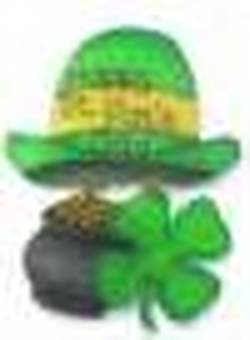
I hope readers don't think of me as out to spoil everyone's holiday celebrations. These blog are, rather, intended to educate, not spoil. Not everything we read or believe or were taught in school is accurate. In this era of readily available information about everything, I often wonder if the human tendency to question is losing its edge.
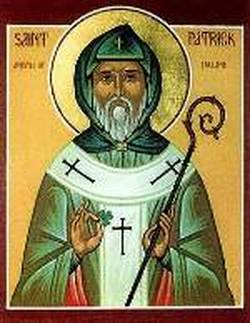
In spite of being the Apostle and Patron Saint of Ireland, Patrick was born in Roman Britain, near Dumbarton, Scotland, in the year 387. His father, Calphurnius was a deacon from a Roman family of high standing, and his mother, Conchessa, was a close relative of St. Martin of Tours. Patrick's grandfather, Pontius, was also a member of the clergy (one source said his grandfather was a priest...hmm). But in his aristocratic youth, Patrick was not an active believer in Christianity.
HOW PATRICK GOT TO IRELAND
Not with a first class ticket on a luxury liner, that's for sure.
At the age of sixteen (perhaps as young as fourteen), Patrick was captured by a band of Irish pirates attacking his father's estate. He was taken to Ireland where he was enslaved for six years near Slemish, County Antrim. (Other scholars claim he was taken to County Mayo near Killala.)
Where ever he was held, he worked as a shepherd. Alone and afraid, he turned to his religion for comfort and direction. It was then he became a deeply devoted Christian.
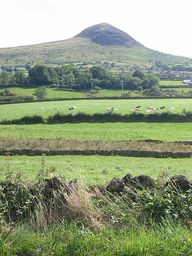
HOW HE RETURNED TO BRITIAN
Believing the vision, he escaped from his master and traveled to a port 200 miles away. He found a ship and persuaded the captain (or some sailors) to let him board. After sailing for three days, they landed in Britain and abandoned the ship; another source claims they landed in France. No source puts forth an explanation of why everyone left the vessel and went off to wander in the wilderness. It seems odd to me that they all abandoned the ship unless they were all, perhaps, escaped slaves.
The band of men wandered in the wilderness for 28 days, faint with hunger. In their desperation, Patrick tried to convince the men to put their faith in God. They weren't having any of it until they came upon a wild boar. Consequently, Patrick's prestige level went up. Apparently, he had other adventures before he finally got home to his family.
In his early twenties, Patrick began studying for the priesthood in Auxerre, France, and was ordained four years later. Later in life, he was ordained a bishop. He had always held on to the desire to bring Christianity to Ireland. Around 431, Pope St. Celestine I consecrated St. Patrick as Bishop of the Irish, and sent him to Ireland to spread the faith. Some historians believe it was Bishop Palladius who was sent to Ireland by the Pope. At any rate, Patrick got there somehow and takes all the credit.
He carried out this work in Ireland for thirty years, living in poverty, traveling, and enduring much suffering. He died on March 17, 461 in Saul, Ireland, where he had built the first Christian church. He is said to be buried in Ulster, County Down, Ireland.
THE LEGENDS OF ST. PATRICK
That's history. Let's take a look at the legends, of which there are quite a few.
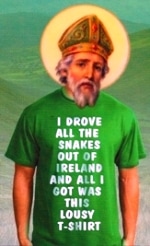
Another OMG moment. There have never been snakes in Ireland for St. Patrick to banish, according naturalist Nigel Monaghan of the National Museum of Ireland in Dublin (and many other people). The island separated from the continent mainland at the end of the Ice Age, and snakes never managed to make the swim, although parts of Scotland were within about eight miles of Ireland.
Nonetheless, legend has it that St. Patrick banished the snakes into the sea after they attacked him while he undertook a forty-day fast on the top of a hill. In fact, snakes were sacred to Druids, and the story of their banishment attests to Patrick's success at removing the pagan influences from Ireland.

Actually, the shamrock, on any other day than March 17, is clover and grows all over the world. Óch! (Alas!) Ireland doesn't have a national flower. However, the shamrock is the registered trademark of the Republic of Ireland, and also the unofficial flower of both North Ireland and the Republic of Ireland.
The shamrock is connected to St. Patrick because, legend tells us, he used the leaf to illustrate the concept of the Holy Trinity; the three separate elements of one entity. In fact, it was the Druids who "started the shamrock on its path to Irish glory" according to the Irish Genealogy-Toolkit. The Druids believed the number three was perfect and had magic powers. Attaching great importance to three, the Druids used three-headed faces and three connected spirals and other three legged symbols.
However, the story of St. Patrick explaining the Trinity in the fifth century doesn't appear in any manuscripts, including his own, until the 18th century.
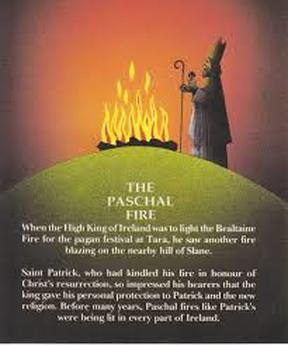
The Celtic feast of Beltaine (Feast of Fires) was a major festival at the beginning of the summer season. A fire would be lit by Ireland's High King on the Hill of Tara. The King's fire was used to light all the other fires. [Maybe it was something like lighting the Olympic torch, but I'm guessing that was only where the High King lived.]
Apparently, St. Patrick got in trouble with High King Laoghaire (d:462) when he lit the fire before the king. Druid elders were dispatched by the king to find out what they could. They reported Patrick's fire could not be put out and would burn forever if the King didn't extinguish it. Unfortunately, King Laoghaire failed to put out Patrick's fire and had to admit that the priest's magic was stronger than his. While the king didn't convert to Christianity, he endorsed Patrick's mission to bring Christianity to Ireland.
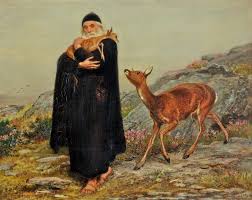
This is a story appears in a poem supposedly written by St. Patrick. In the poem, he used a power called féth fíada to change himself and a companion into wild deer so they could escape an ambush en route to the Hill of Tara in the Boyne Valley, the sacred dwelling place of the Druid gods.
Patrick's Celtic adversaries were waiting for St. Patrick to imprison him, but saw only a deer and a fawn running across the field. That way, St. Patrick reached the hill without being attacked. Why this story is called St. Patrick's Breastplate is a puzzle to me unless it means shield.
ST. PATRICK'S DAY CELEBRATIONS
Regardless of St. Patrick's origins and history, he is beloved by the Irish the world over, and his holiday is celebrated where ever there are Irish to celebrate.
I propose a toast to St. Patrick using the words of some favorite old Irish drinking toasts.
• A toast to world domination:
God invented whiskey so the Irish wouldn't rule the world!
• Another Old Irish drinking toast:
When we drink, we get drunk
When we get drunk, we fall asleep
When we fall asleep, we commit no sin.
When we commit no sin, we go to heaven.
So, let's all get drunk, and go to heaven!
• Honoring the things we love:
Here's to the wine we love to drink, and the food we like to eat.
Here's to our wives and sweethearts, let's pray they never meet.
Here's champagne for our real friends, real pain for our sham friends.
And when this life is over, may all of us find peace.
ABÚ (Hurrah for) SAINT PATRICK and HAPPY SAINT PATRICK'S DAY.
Resources
http://www.catholiccompany.com/
http://en.wikipedia.org/wiki/Saint_Patrick%27s_Day
http://www.catholic.org/saints/saint.php?saint_id=89
http://www.history.com/topics/st-patricks-day/who-was-saint-patrick
http://st-patricks-day.com/about_saintpatrick.html
http://www.irish-genealogy-toolkit.com/legend-of-Saint-Patrick.html
http://www.biography.com/people/st-patrick-9434729
http://wilstar.com/holidays/patrick.htm
http://www.irishsayings.org/irish-drinking-toasts
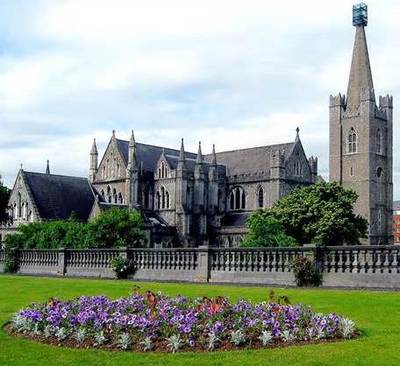
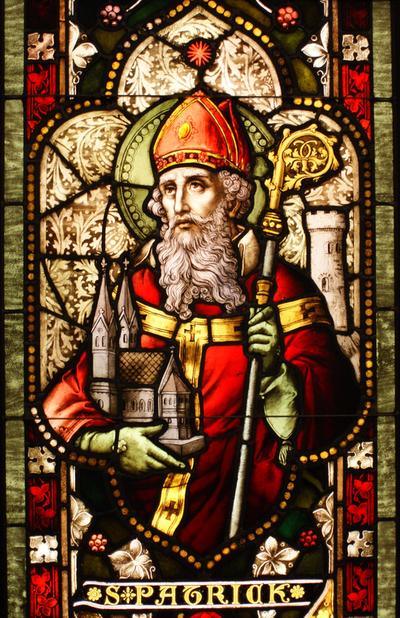
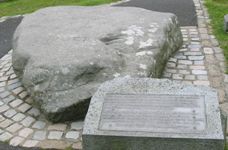
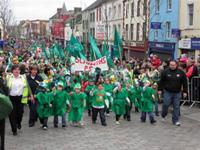
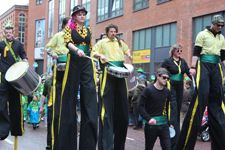
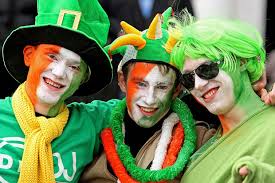
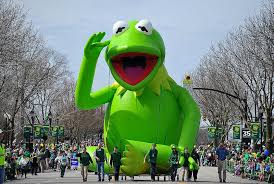
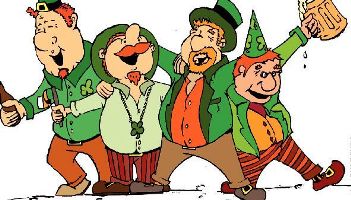
 RSS Feed
RSS Feed